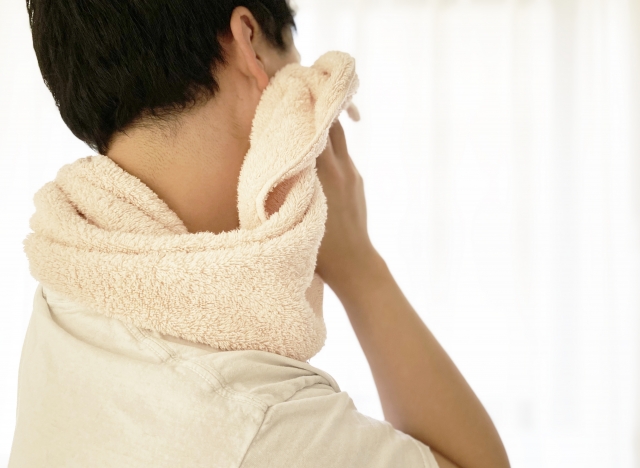What is Hyperhidrosis?…
It is a condition characterized by excessive sweating in localized areas such as palms, face, head, armpits, and soles of the feet.
There are two types: generalized hyperhidrosis, where sweating occurs throughout the body, and focal hyperhidrosis, where sweating is concentrated in specific parts of the body.
Symptoms…
Excessive sweating that interferes with daily life.
In severe cases, sweating may be profuse to the point of dripping.
Excessive sweating can cause problems in daily life, such as needing to constantly use a handkerchief, wetting and crumpling paper, or damaging smartphones.
Causes…
Generalized hyperhidrosis may be due to conditions such as hyperthyroidism or diabetes, while focal hyperhidrosis may result from psychological tension or peripheral nerve damage.
Excessive sweating caused by underlying conditions is referred to as secondary hyperhidrosis.
Prevention of Hyperhidrosis…
Improvement of dietary habits
Improvement of lifestyle
Creating time for relaxation
Diagnosis Criteria for Hyperhidrosis…
1. Onset before 25 years of age.
2. Symmetrical sweating observed on both sides.
3. Sweating stops during sleep.
4. Episodes of excessive sweating occur at least once a week.
5. Family history.
6. Interference with daily activities.
Localized excessive sweating persists for more than 6 months without a clear cause, and if two or more of the above criteria apply, it is diagnosed as hyperhidrosis.
Treatment Methods…
If hyperhidrosis symptoms are caused by an underlying condition, treatment of the underlying condition takes precedence.
For primary hyperhidrosis, treatment guidelines are established, including the application of topical medications such as aluminum chloride for palm and sole primary hyperhidrosis.
If these methods are ineffective, localized injections of botulinum toxin therapy may be considered.
Additionally, surgical therapy to block the sympathetic nerves in the chest using endoscopy may be chosen.
For axillary primary hyperhidrosis, initial treatment involves topical aluminum chloride therapy, and if ineffective, botulinum toxin injection therapy may be chosen. Botulinum toxin injection therapy for axillary hyperhidrosis has been covered by insurance since 2012.
At our clinic, we also offer insurance-covered treatments for those who meet the diagnostic criteria.
Depending on the physician’s assessment, there may also be options available for self-pay treatments.
MY Beauty Clinic
4th Floor, RBM Ginza Building, 7-4-15 Ginza, Chuo-ku, Tokyo
4 minutes walk from Ginza Station B9 Exit and C3 Exit
TEL:03-4565-0107
Opening Hours: 10:00 AM to 7:00 PM (including weekends and holidays)
We accept reservations via WEB, LINE, and phone.
WEB Reservation: https://new.mybc.jp/en/contact/
LINE Reservation: https://page.line.me/114yxbtn







